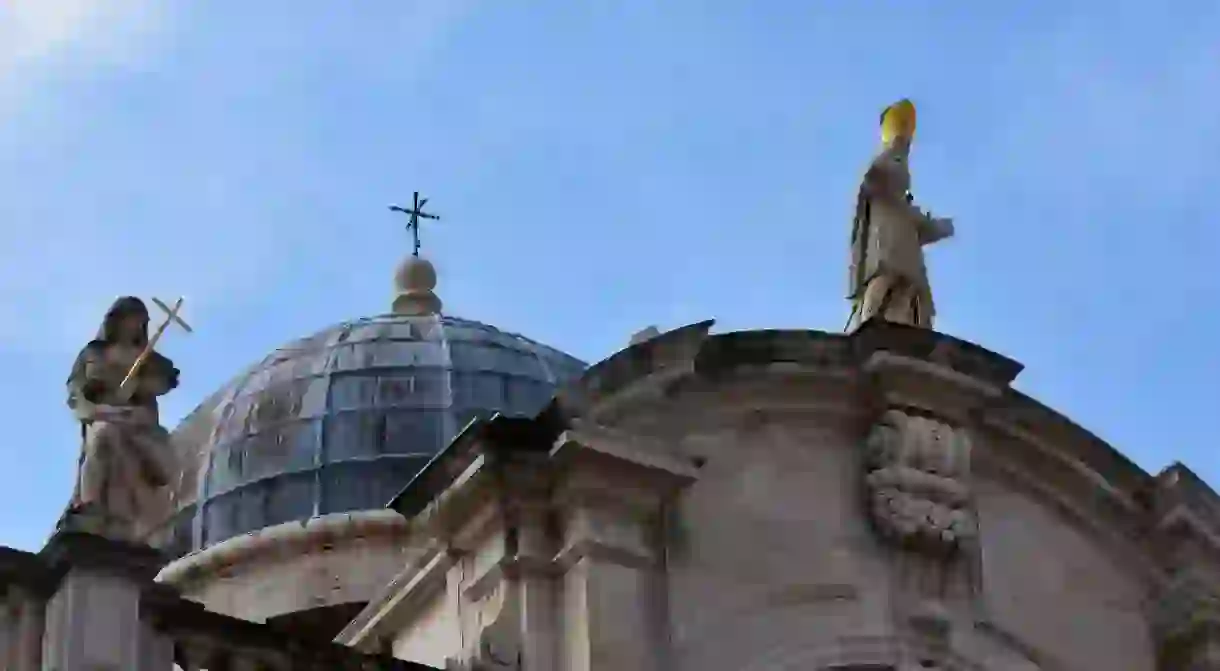7 Traditions and Customs Only Croats Understand

Burning effigies of Turks, sabre dancing and rowing furiously down the Neretva river are all part of a long list of strange Croatian traditions that date back more than 1,000 years. Some have a specific historical backstory, but others seem bizarre purely for the sake of it.
The Dubrovnik Gargoyle
Monastery
As you enter Dubrovnik’s Pile Gate into the Old Town, you might notice a bizarre ritual. By the entrance to the Franciscan Monastery, on the main street of Stradun, one person will break off from the steady pedestrian traffic to balance precariously on a stone protruding from the wall. Carved in the likeness of an owl, it is said that anyone who hops onto the gargoyle will be lucky in love. Some brazen participants partake in the second stage of this myth and remove their shirts as they balance.
Feast of St Blaise, Dubrovnik
Church
Dubrovnik’s annual celebration, the Feast of St Blaise, dates back to 972 when a the city’s patron saint appeared to a local priest some 650 years after his death to warn of Venetian invaders. On St Blaise’s Day, 3 February each year, citizens dress in full traditional costume for a banner-waving procession in the Old Town’s main street and square. As part of the procession, priests carry the saint’s relics while onlookers are treated to plates of macaroni in meat sauce and kroštule doughnuts.
Kamenita Vrata, Zagreb
Shrine

Close to the main street of Radićeva, Zagreb’s Stone Gate, or Kamenita Vrata, is more than just a gateway that divides the city’s Upper and Lower Towns—it’s a place of prayer and reflection. The curved passageway also contains a chapel that was built in honour of the 16th-century painting of the Virgin Mary on the passage wall, which has served as a shrine since it survived a fire in 1731. People of all generations visit to light candles and say prayers at the site throughout the day.
Lastovo Poklad
It seems that the more distant the destination, the more extreme its traditions. Such is Poklad on the remote island of Lastovo in Southern Dalmatia. A combination of pre-Lent abandon and historic fear of Ottoman invasion, the Poklad, or puppet, carnival on Shrove Tuesday centres around a figure in a fez smoking a cigarette. Strung 300 metres above sword-bearing locals, the straw-stuffed puppet is stabbed and battered with firecrackers as it is slowly lowered to the ground.
Moreška Sword Dance
The Moreška sword dance is performed in the historic island of Korčul, near Dubrovnik, where they have particular reason to dress up as Moors and Christians and swing sabres around, as the Battle of Lepanto in 1571 prevented an Ottoman invasion. Ever since, Korčulans have performed this dramatic dance that originated in early medieval Spain. Tourist-friendly shows can be seen all summer, but the main performance on the Feast of St Todor on 29 July is relatively authentic, minus the ox beheading that once accompanied it.
Neretva Boat Marathon
Medieval pirates inspired the modern-day Neretva river boat marathon, which takes place annually during the second weekend of August. Tens of thousands of spectators line the banks of the 22.5-kilometre (14-mile) course from Metković to Ploče, as some 300 competitors set off in the traditional narrow wooden boats. A team of 10, plus a coxswain and drummer, somehow fit themselves into the cramped craft, and then they row like crazy. For the best partying and feasting, onlookers should head for the start or finish of the race.
Statue of Grgur Nin, Split
Church
Posed dramatically with one hand pointing and the other clasping a book, the statue of Grgur Nin stands outside the Golden Gate and Northern wall of Diocletian’s Palace in Split. Designed by one of Croatia’s greatest sculptors, Ivan Meštrović, this famous landmark immortalises the bishop for having introduced the Croatian language in Catholic church ceremonies. Today, many passers-by touch the bishop’s big toe for good luck. No one is quite sure why, though Croats consider the cleric an important purveyor of their language.













